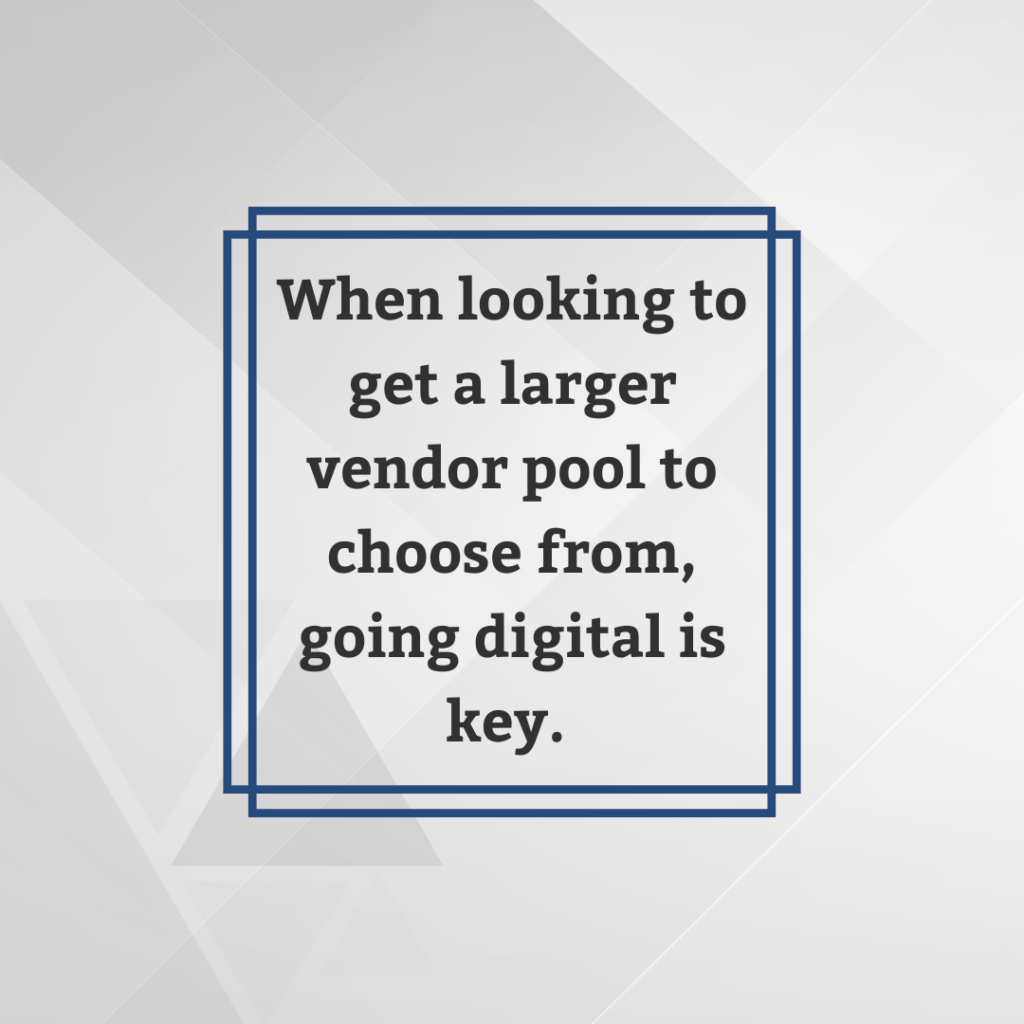As a government procurement agent, you need to make sure that projects get done in a timely manner, stay on budget, and that you find the best vendor for the job. In some situations, procurement agents may feel like there are few vendors to choose from, and therefore continue to award contracts to the same providers over and over. However, there are a few best practices that can help procurement agents make working in the public sector easier and more attractive to a wider range of competitive bidding vendors, giving them a bigger selection of vendor options.
1. Get big results from small businesses
A local, small business may be the perfect fit for your job. Smaller businesses tend to have fewer employees and less overhead, and thus can complete the job at a more competitive bidding rate. However, small business owners often don’t have the time to hunt out government RFPs as they are often posted in a variety of places. A procurement network can help government agents reach out to small businesses, as this type of service will send out RFPs to matching vendors directly to their inboxes. This will give small businesses a chance to learn about the job and apply. Remember to give enough time in your deadline for vendors to create a bid.

2. Dial in for digital
When looking to get a larger vendor pool to choose from, going digital is key. Contractors can struggle to find government RFPs, as there are so many potential places for them to be posted. This is especially true if the RFP is not available online. Digitizing RFPs puts your request in one easy-to-use platform and makes them accessible to a range of vendors. This will also streamline the process on both ends, allowing the contractor to simply apply with templated responses and for government procurement agents to be able to systemize and filter bids for specific criteria. This will save time both on the vendor end and for the procurement agent.
3. Make standardized bidding the standard
Some vendors may be hesitant to apply for government work because every RFP is different, and they don’t know how the bidding process works. A standardized bidding process will go a long way to encourage bids and provide transparency to the vendor. This will allow them to learn how the RFP cycle plays out and what to expect once they submit their bids. The best way to standardize the bidding process is to offer electronic bidding through a procurement network. This way contractors can become comfortable with one user interface, making the bidding process straightforward.
Easy as 1, 2, 3
These three best practices for public procurement will encourage RFP responses and streamline the competitive bidding process for vendors. By reaching out to small businesses, taking your RFP digital, and standardizing the competitive bidding process, you’ll make procurement easy for both parties.
What are your public procurement best practices suggestions?
